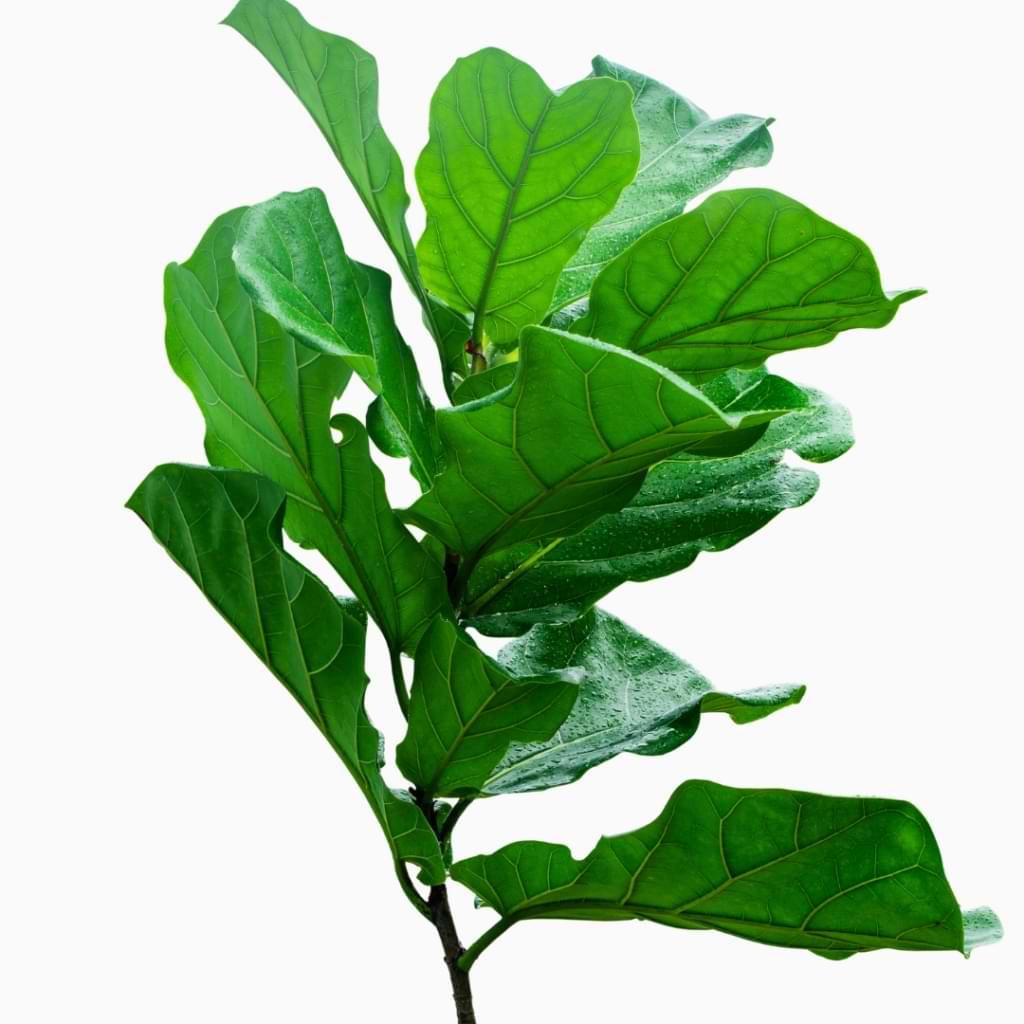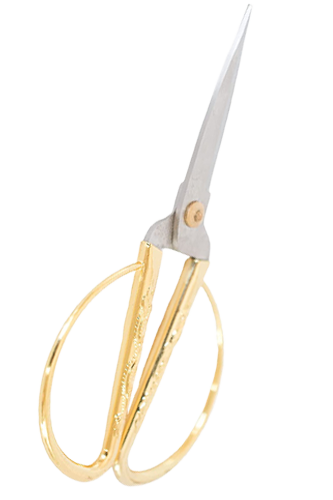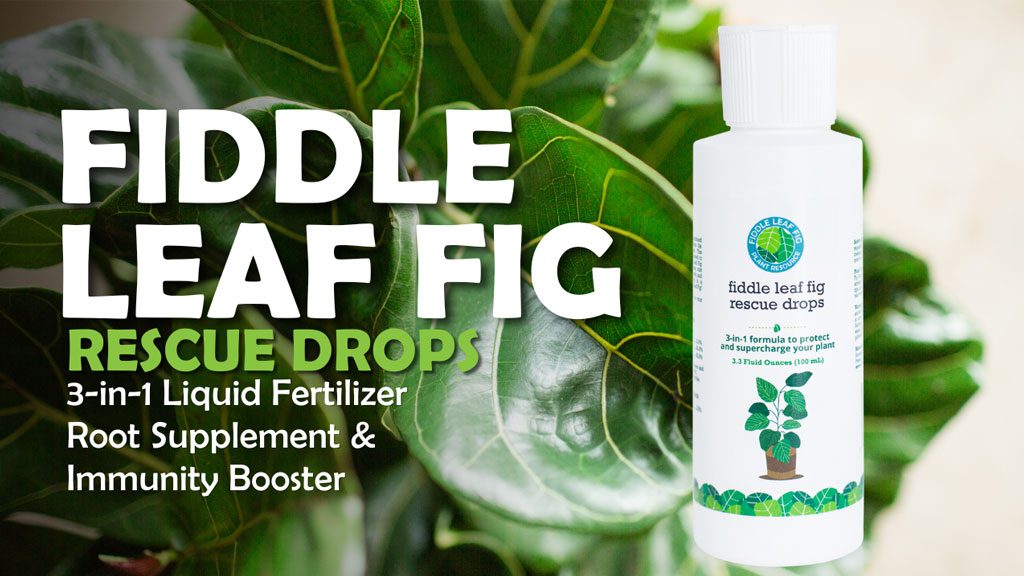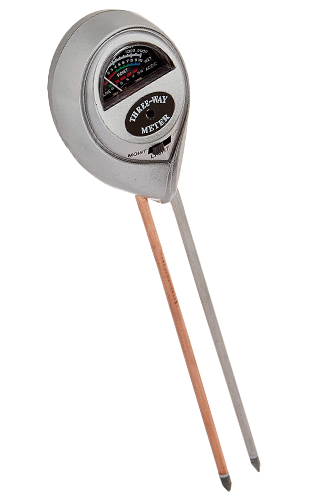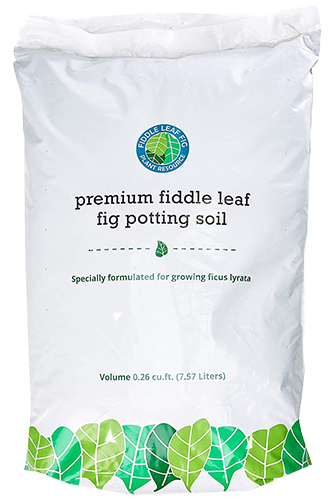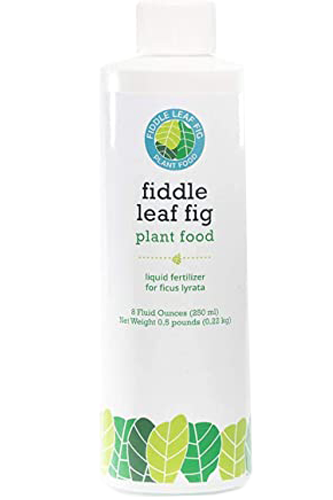You’ve seen those beautiful fiddle leaf figs on Instagram that have that fun lollipop shape with a long, slender trunk topped with a rounded crown of branches and those characteristic lyre-shaped leaves.
If you’ve brought home a fiddle leaf fig of your own and have been letting it grow for a while, you might have come to a harsh realization: that trendy lollipop shape does not occur naturally! Rather, you must shape your fiddle to get that trunk and rounded top look.
This involves pruning, of course, to get that bare trunk. But to get the lollipop top, you must encourage the tree to branch.
You can do this with a simple technique called notching. Notching fiddle leaf fig trees is not hard to do! All it takes is a little know-how and a decent amount of luck.
What Does Notching Fiddle Leaf Fig Trees Mean?
Notching fiddle leaf fig trees is the act of deliberately cutting or wounding the trunk of a tree to encourage it to branch out at that spot.
Basically, when a tree is wounded near a node, it will disrupt the flow of the sap. The sap contains hormones that can either promote or inhibit growth. If you’re lucky, notching fiddle leaf fig tress will encourage the plant to direct energy and resources to the dormant leaf buds in that spot, which will result in the growth of a new branch about 30-50% of the time. (Yup, this isn’t a sure thing—but few things with gardening are!)
Take your plant propagation to the next level with our exclusive Notching Bundle, the essential tool for fostering healthier growth and lush foliage in your plants! https://amzn.to/463xe6W
Is Notching the Same As Pinching and Pruning?
Notching, pruning, and pinching are all methods used to cut and shape a tree to control the way it grows, but they’re all completely different techniques.
Here’s a quick rundown of what each of these techniques is and when to do each:
Notching: Notching is creating a cut or notch in the trunk of a tree to encourage branching at that location.
Pinching: Pinching is cutting off the new growth from the top of a tree to encourage branching from the top. Where notching fiddle leaf fig trees involves just making a cut, pinching is actually cutting a chunk off the very top of the tree.
Pruning: Pruning is the removal of leaves and/or branches. A plant owner might do this to improve a tree’s health by removing dead or damaged growth, or to thin out crowded areas to promote airflow, which prevents fungal issues like powdery mildew. You could also prune branches and leaves below a certain point in order to shape your tree. (This is part of getting that coveted lollipop shape!)
You can use all these techniques to shape your fiddle leaf fig and keep it healthy and growing!
How Do You Notch a Fiddle Leaf Fig Tree?
So, you’ve decided that you want your fiddle leaf fig to grow a branch in a certain area. So what do you do now? How do you go about notching fiddle leaf fig trees?
Here’s what to do.
Tools You Will Need for Notching Fiddle Leaf Fig Trees
First, you’ll need to gather your supplies.
Most importantly, you’ll need a pair of sharp pruning shears or a very sharp knife. Make sure to sterilize your tools with alcohol or hot water and soap so you don’t risk spreading bacteria or fungus to your tree or other plants.
It’s also a good idea to wear gloves when you do this, either put down some towels or a tarp, or be prepared to wipe up the fiddle’s sticky white sap when you make your cut before it falls on the floor. This irritating sap can bother your skin and damage furniture and flooring!
Rooting hormone or our Propagation Promoter can also be really helpful here and increase your chances of success!
Methods of Notching
There are a few different variations of this simple technique, so we’ll walk you through the different ways to do this.
Notching Step-by-Step Guide
To notch your fiddle leaf fig, you’ll want to gather your tools and then locate a node on the trunk.
Nodes are areas on the trunk that contain dormant leaf buds, and you can find them by looking for the slightly thicker areas on the trunk between leaves or branches. They might also look like a line running around the trunk.
Then you’ll make your cut just above the node. To do this, use the knife or sharp edge of your shears to push into the wood, or you can move the blade from one side to the other to make a slice.
Cut deep enough that you see white sap start to flow, but be very careful not to push or slice more than a third of the way through the trunk, or you risk pruning your plant instead of notching it!
It’s also a good idea to get some Propagation Promoter on a cotton ball and dab it on the wound to give your plant a little hormonal boost and increase your chances of a successful notching.
On a smaller tree, you can try making up to 2 or 3 notches. On a larger tree, you can try up to 5 or 6. Most likely, they won’t all work, but this should ensure that you get at least 2 or 3 new branches on your fiddle leaf fig!
Single-Cut Method Notching
For the single-cut notching method, you’ll simply use your shears to make one ⅛” deep cut or to cut ¼-⅓ of the way through the branch. Cut up or down at a 45-degree angle just above the node where you want your tree to branch.
Double-Cut Notching
For the double-cut method, you’ll make your ⅛” deep cut at a 45-degree angle like you would for single notching, but you’ll make an additional cut above or below that one at an opposing 45-degree angle so that you cut a small wedge out of the trunk.
How Long Does Notching Take to Work?
In our experience, notching typically has a 30-50% success rate. But if it’s going to work, you should see results within 6-8 weeks. If you haven’t seen any signs of new growth after two months, you might want to try again.
Does Notching a Fiddle Leaf Fig Work?
When it comes to plants, there’s no such thing as a sure thing! Notching fiddle leaf fig trees is a great way to encourage branching, but don’t be surprised if it takes you a few tries. From our experience, you can expect a 30-50% chance of success, or for about ⅓-½ of your notching attempts to yield the results you’re looking for.
But if they don’t work, don’t give up! Just try again.
How to Encourage Successful Notching
While notching is never a sure thing, there are steps you can take to increase your chances of getting a new branch where you want it!
Thick Trunk
We don’t recommend notching a thin or flimsy trunk, because you’re more likely to accidentally behead your plant rather than notch it! It’s way too easy to cut too deep and take off the whole branch by mistake.
If your fiddle leaf fig’s trunk could use some thickening and strengthening, learn how to accomplish that by watching this video.
Plant Care
Of course, taking proper care of your plant will help your notching efforts! Be sure that you’re following the basics of fiddle leaf fig care with proper watering, adequate sunlight, and fertilizer.
Adequate Watering and Drainage
One of the most important parts of fiddle leaf fig care is making sure your pot and soil drain well so your plant gets the right amount of water. Fiddles don’t like sitting in soggy soil, so make sure your pot has drainage holes. You’ll also want to use a light, well-aerated soil that drains well. Cactus mix with extra perlite or vermiculite mixed in can work. We highly recommend our Premium Fiddle Leaf Fig Soil because it’s specifically created for fiddles and other ficuses, with the ideal balance of moisture retention and drainage.
As for watering guidelines, make sure to water your fiddle when the top 2-3 inches of soil feel dry to the touch. You can also use a moisture meter to get a more accurate idea of when it’s time to water. Here’s the meter we recommend (it also measures light and soil pH!). When the meter reads 3-4, it’s time to water!
Nutrient-Rich Soil
Growing new branches requires the right nutrients, so make sure your fiddle leaf fig is getting the proper nutrition! In nature, plants get all the nutrients they need from their soil, but a potted tree only has access to the nutrients in its potting soil, and can use up all those nutrients in just a few months! If you’ve had your plant for a month or two, it’s important to supplement with a high-quality liquid fertilizer, at least during the growing season.
We recommend Fiddle Leaf Fig Food because it’s perfectly balanced for fiddles and other ficuses, and contains the nutrients necessary for branch formation, root growth, and new leaf production.
Adequate Sunlight
Fiddles need lots of bright sunlight to make the energy necessary for growing new branches, so make sure your tree gets plenty of bright, indirect sunlight. (Or even direct sun if it’s been properly acclimated to that much light!)
An east-facing window is a perfect spot for a fiddle leaf fig. A spot near a south- or west-facing window can also work well, but watch out for direct sun on the leaves if your tree can’t handle it. This can cause leaf scorch!
A north-facing window might not provide enough natural sunlight, but you can always supplement with a grow light. We love these full-spectrum bulbs that you can just screw into normal light fixtures.
Repotting Fiddle Leaf Fig
Another important—and often overlooked—part of caring for a fiddle leaf fig (or any plant) is making sure the roots have room to breathe and grow!
Repot your fiddle every year or whenever the roots start to get cramped and the soil starts to compact. When you do this, go up one pot size and pick something that’s 2-3 inches larger in diameter than the root ball. This will give your plant room to go without holding on to more water than the roots can absorb.
Notching Fiddle Leaf Fig Final Thoughts
Notching isn’t a guarantee, but it’s a fun experiment and a great way to encourage your fiddle to grow into the shape you’re looking for.
If it doesn’t work the first time around, just try again! As long as you don’t accidentally chop your tree in half, you really can’t mess this up. A shallow wound won’t hurt your tree or prevent you from trying again.
Final tips for increasing your chances of notching fiddle leaf fig tree success:
- Spring and summertime might be the best times to attempt notching because this is their natural growing season and most fiddles will already be experiencing a growth spurt.
- Take good care of your fiddle to ensure your tree is as healthy as possible prior to notching; this way, it will be well prepared to put energy into growing a new branch.
Notching can be intimidating if you’ve never done it before, but it’s not difficult. And it’s so exciting to see a new baby branch starting to grow!
Give it a try!

